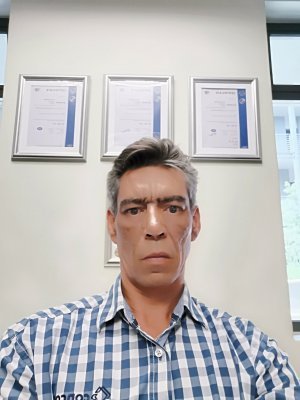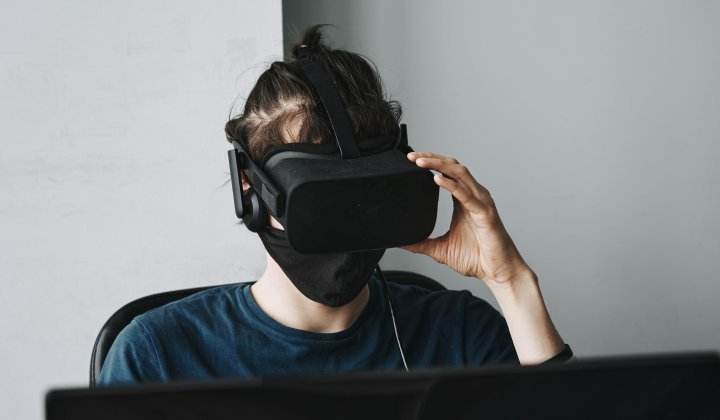A chat about the construction industry reveals a deeply complex ecosystem that is trying to make sense of day-to-day issues, making new ideas and technologies – especially around health and safety – a luxury many simply don’t have time for. In a country with an official unemployment figure of around 29%, there is also a distrust of anything that may usurp the role of humans. “We need to keep people employed, so any technology that we adopt cannot affect employment,” Chalklen says.
However, technology traverses more than just the mechanical and robotics aspects of a business, meaning that South Africa’s construction industry may not need physical drones and robots to help with the heavy lifting. But what is required is innovation and technological help.
According to a published thought leadership piece by Patrick Nwabueze Okonkwo, post-doctoral fellow at Stellenbosch University, South Africa’s construction industry is one of the country's most dangerous industries. To have any chance of improvement, the sector must change its approach to health and safety.
Innovative thinking
The starting point in this discussion is the recognition that innovation is not just about hardware; it’s as much about a shift in approach, which can be a powerful driver of change. Regrettably, South Africans are notorious for disliking change. Both Chalklen and Mathew Goncalves, co-founder of Health and Safety Dialogue Company, say that South Africans have the attitude of “this is how we have always done it”.
When it comes to health and safety, Goncalves says the industry needs a fresh approach. “Health and safety is often viewed as a grudge purchase. It is often seen as an expense rather than something that adds value to your business,” he explains. “There is an old saying, ‘If you think safety is expensive, try having an accident’.”
In an industry which Okonkwo says accounts for as many as 30-40% of all work-related fatalities, addressing health and safety has to become a strategic point of focus for companies. Therefore, its value to a business needs to be redefined.
South Africa’s construction industry is ranked the third most dangerous industry in the country...
According to Goncalves: “If you redefine your safety strategy as something that increases production, then suddenly health and safety falls in line with your business strategy.” As such, he believes the health and safety agenda should be sanctioned at board level.
Companies should also look at health and safety more holistically. His advice is that instead of only focusing on accidents and analysing what went wrong, there needs to be an understanding of why people take risks on the job. This requires a people-focused approach to safety, and one that looks at the psychology behind accidents.
“We need to train our health and safety professionals into a different way of thinking. You don’t need to be a psychologist to ask questions and to listen to the answers. People in the industry, however, are not trained to listen. They are taught to look at the very technical side of safety,” explains Goncalves, who praises South Africa’s technical safety credentials.
But things are changing, and the construction industry need only look at the safety-obsessed global aviation industry for insights into a new approach to addressing health and safety. “Aviation works on a lot of these principles because they believe in systems thinking,” explains Goncalves. “In systems thinking you look holistically, not just at what workers do. You look further back, as wide as you possibly can, at anything that could result in accidents.”
...managing a workforce that is not yours is complex...
This then requires that the industry also applies its attention to what is going right in the workplace and to see how that behaviour can be replicated. This begs the question, says Goncalves: “Why are we not learning from that?”
Developed solutions for an emerging problem
Resistance to innovative solutions is perhaps understandable in an industry that is reeling under the pressures of combining developed-world legislation with emerging market realities.
In an attempt to combat the country’s unemployment problem, regulations require construction firms to subcontract at least 30% of their work to small and medium-sized enterprises. Currently Okonkwo suggests that the industry accounts for around 8% of South Africa’s formal employment and 17% of informal employment.m
However, Chalklen explains that managing a workforce that is not yours is complex. He says that on any given day as many as 600 people on a work site will be subcontractors. This part of the industry is largely unregulated and very fluid in terms of people moving in and out of jobs. Health and safety managers struggle daily to keep up with regulations that stipulate that everyone on site needs to have a certain level of compliance in the form of certification and accreditation. “My guys on site are half investigators. They have to try and decipher the information we are given and check that it is legitimate. Even though it is not our job, we are the ones carrying the risk,” explains Chalklen.
Given these complexities where does the industry turn?
Adopting appropriate tech
The first solution – the simplest but perhaps the most difficult to achieve – is collaboration. Chalklen shares his frustrations around a lack of collaboration within the industry: “Construction companies do not share. We do not share our successes and we do not share our lessons. We also do not share what is right for the industry. Instead, we keep these as secrets in order to give us a competitive advantage.”
In a sector that has received no health and safety statistics for the last five years, according to Chalklen, collaboration will not only give the industry real-time statistics but will also allow it to create a central database of all sub-contractors and their workers. Chalklen believes this would be the most relevant tech solution for the industry.
Good data, shared databases and worker information would immediately benefit the health and safety side of the industry. “If we had a central database where all of a person’s information was stored – including IDs, skills certificates, experience and medical checks – when a person arrives on site, I would be able to pull up all their information up. This would prevent a lot of the fraud and forgeries we are seeing at the moment.” A comprehensive database would make it easier for the industry to ensure that only skilled people were allowed onto a work site.
South Africans have the attitude of “this is how we have always done it.
Data and information may not be the most glamorous tech solution available to the industry, but it is the most relevant. It may not require MIT graduates to develop, but it does require collaborative innovation at an industry level. And it certainly requires all stakeholders to come together to openly share their data, their successes and their failures.
Key health and safety takeaways
When it comes to the South African construction industry, experts suggest the following innovations to address health and safety issues more effectively:
· Strategic imperative: Health and safety should be seen as contributing to a company’s production and its bottom line.
· Holistic view: Health and safety should be viewed holistically alongside a broad range of considerations, including antecedent factors, which must be comprehensively analysed.
· People-centric: The focus must be on people rather than compliance. The industry needs to find solutions to why people put themselves at risk.
· Collaboration: Major players need to connect to share insights around successes and failures.
· Databases: A central database that contains all worker information including health checks, skill levels and experience must be created.
Five principles of human and organisational performance
1. Error is normal
2. Blame fixes nothing
3. Learning and improvement are vital
4. Context drives behaviour
5. Management response to failure matters
Ready tech
South Africa may not be ready to fully embrace radical new technologies, but here are a few products changing the face of health and safety on international construction sites.
1. Drones are being used to enhance security on-site, helping with site awareness and photography, and to help contractors get a bird’s eye view of the construction process.
2. Gadgets:
- Halo lights using rechargeable lights wrapped around a hard hat, giving 360-degree light and making the wearer clearly visible.
- Smart hard hats detect toxic chemicals like carbon monoxide within the workspace.
- Smart clothing can keep body temperatures stable and protected and gloves that change colour warn wearers of exposure to toxic chemicals.
- Smart safety glasses embedded with cameras, projector screens and WiFi allow workers to communicate in real-time with managers in the office.
- Smart headsets with access to computers and WiFi give workers access to manuals, project updates and even safety warnings.
- Digital measurement devices combine hardware and software allowing workers to take precise measurements in hard-to-reach places by using Bluetooth, GPS and compasses to gather information.
- Site sensors and cameras allow managers to monitor all aspects of construction including visual monitoring, noise levels, and temperatures, to list a few.
3. Big data is allowing the construction industry to pool and share data and have access to central databases with critical information about the industry.
4. Construction productivity software connects everyone involved in a project through shared documents, plans, reports, certificates, and more.
5. Machine learning uses algorithms to prioritise problems and identify risks.
6. Augmented reality allows collaboration between architects, contractors and clients in real-time and allows them to make changes at any stage of the project while identifying hazards and risks.
7. Virtual reality is being used to train construction workers on the job, from crane operators to excavators and welders.
8. Apps with panic buttons allow workers to monitor their work and call for emergency assistance.







